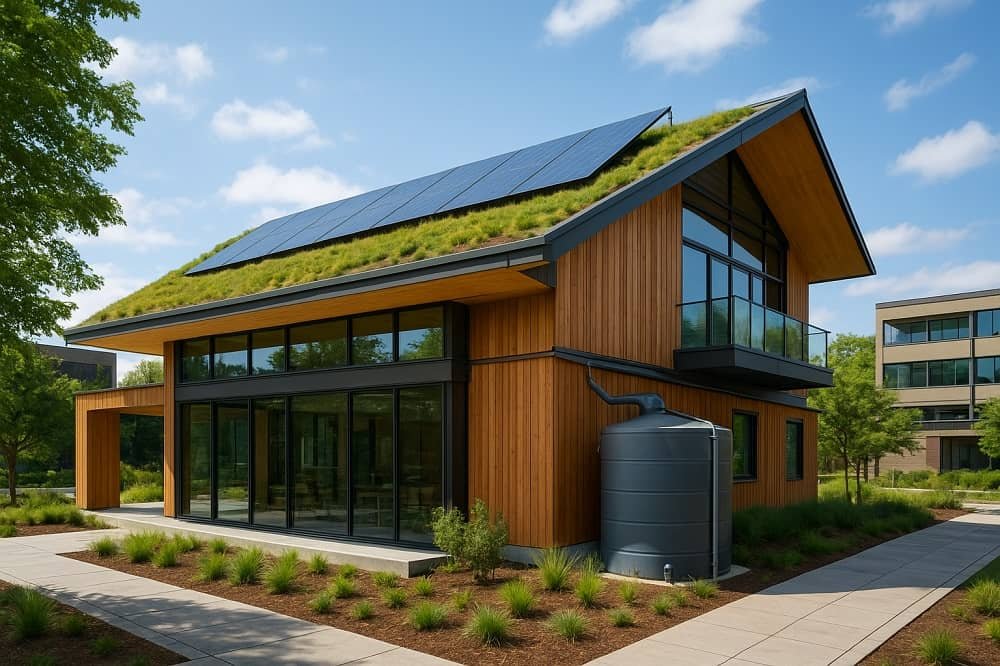Climate change has reshaped architectural practice, demanding that designers move beyond aesthetics and functionality to embrace resilience as a core principle. As extreme weather events grow more frequent and severe, architects must create buildings that withstand environmental stresses while supporting broader climate adaptation strategies. This represents a major paradigm shift, requiring innovation in materials, structures, and performance systems.
Understanding Climate Resilience in Architecture
Climate resilience in architecture is the ability of buildings and communities to anticipate, prepare for, respond to, and recover from climate-related disruptions. It extends beyond weatherproofing to include adaptive capacity, redundant systems, and long-term sustainability. Because climate impacts vary by region, resilient design requires tailored solutions addressing local vulnerabilities while supporting global climate goals.
Resilience demands that buildings function not only under normal conditions but also during and after extreme events. Architects are reframing climate considerations as opportunities for innovation rather than constraints, pushing designs that integrate passive and active strategies to minimize energy use while ensuring durability.
Material Innovation and Selection Strategies
Material selection forms the foundation of climate-resilient design. Architects increasingly use bio-based, recycled, and locally sourced options to lower embodied carbon and enhance performance. Materials must balance durability, thermal performance, moisture control, and end-of-life considerations.
Advanced technologies enable new envelope solutions, including phase-change materials for thermal regulation and smart materials that dynamically adapt to conditions. These allow real-time optimization of comfort and efficiency while maintaining integrity.
Durability under acute events like flooding, high winds, and temperature swings is critical. Many resilient approaches blend traditional materials proven over centuries with modern enhancements. Moisture management remains a top concern, as buildings must prevent bulk water intrusion and vapor issues while maintaining insulation and indoor air quality. When failures occur, proper roof leak repair and remediation become essential to limit damage.
Structural Systems and Adaptive Design
Resilient structures must withstand predictable loads and unexpected stresses while staying functional. This has driven adaptive systems that adjust behavior based on conditions—a departure from static structural design. Flexibility, redundancy, and graceful degradation are now central, ensuring systems shed loads progressively instead of collapsing catastrophically.
Technologies like base isolation and damping, once limited to seismic zones, now enhance climate resilience against dynamic forces. Modular and prefabricated construction adds further advantages: tighter quality control, reduced waste, and rapid deployment of proven solutions. Many modular systems also allow disassembly or relocation, maximizing adaptability.
Building Performance and Environmental Systems
High-performance envelopes are the first line of defense, integrating thermal control, moisture management, ventilation, and daylighting. These must perform under extremes while maintaining efficiency and comfort.
Passive strategies—orientation, natural ventilation, daylighting, and thermal mass—reduce mechanical loads and maintain habitability during outages. Where active systems are required, redundancy is vital. Rather than duplicate systems, resilient designs use diverse energy sources and technologies, ensuring essential functions persist even when utilities fail.
On-site renewable energy, paired with storage and backup, is becoming standard. These systems keep buildings operational during extended outages, provided they are also designed to survive extreme conditions.
Water Management and Site Integration
Resilient water strategies address both scarcity and excess, preparing for drought and flooding alike. Solutions include rainwater harvesting, greywater recycling, and advanced stormwater systems that adapt to variable conditions.
Site design enhances building resilience through green infrastructure like bioswales, permeable paving, and wetlands. These manage stormwater, improve microclimates, and provide ecological benefits. Importantly, buildings must be integrated into larger systems, acknowledging neighborhood and watershed-scale dynamics. Collaborative planning across scales ensures resilience measures reinforce one another.
Future Directions and Implementation Strategies
The future of resilient design combines emerging technologies with proven principles. AI and machine learning now optimize building performance, while new materials and construction techniques expand possibilities. These advances must balance with cost, constructability, and long-term maintainability.
True resilience requires collaboration among architects, engineers, planners, policymakers, and communities. Comprehensive strategies must be technically sound and socially acceptable, ensuring adoption at scale.
Conclusion
Climate resilience is now a defining challenge in architecture, requiring deep changes in conception, design, and construction. Success lies in integrating new technologies with time-tested approaches, producing buildings that perform under both everyday and extreme conditions.
As climate impacts intensify, resilience will shape the built environment’s ability to support thriving, sustainable communities. Through continued innovation and collaboration, architects can create buildings that not only endure but actively contribute to adaptation and long-term livability.




